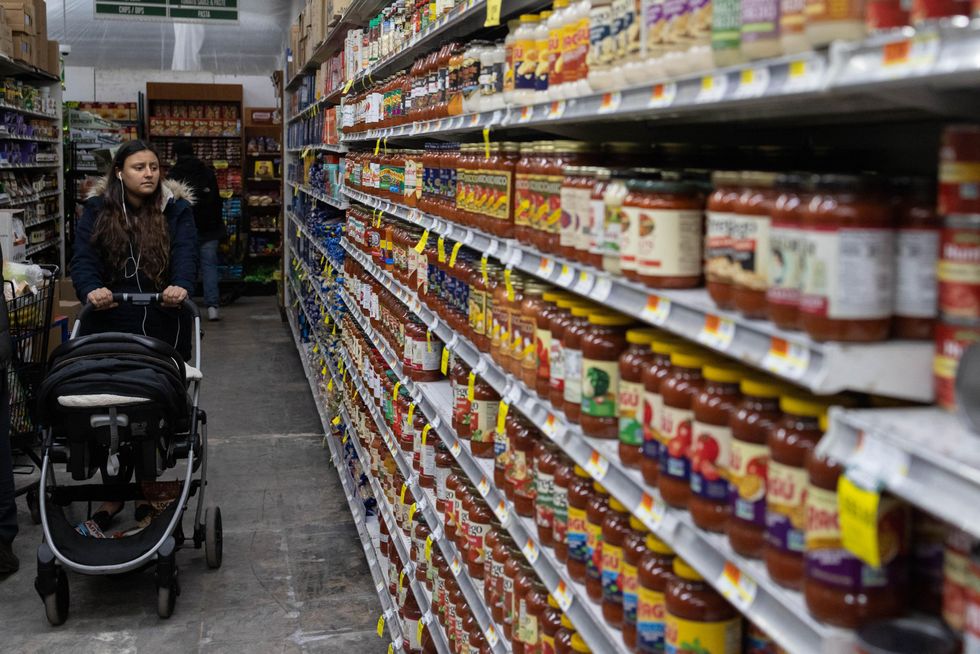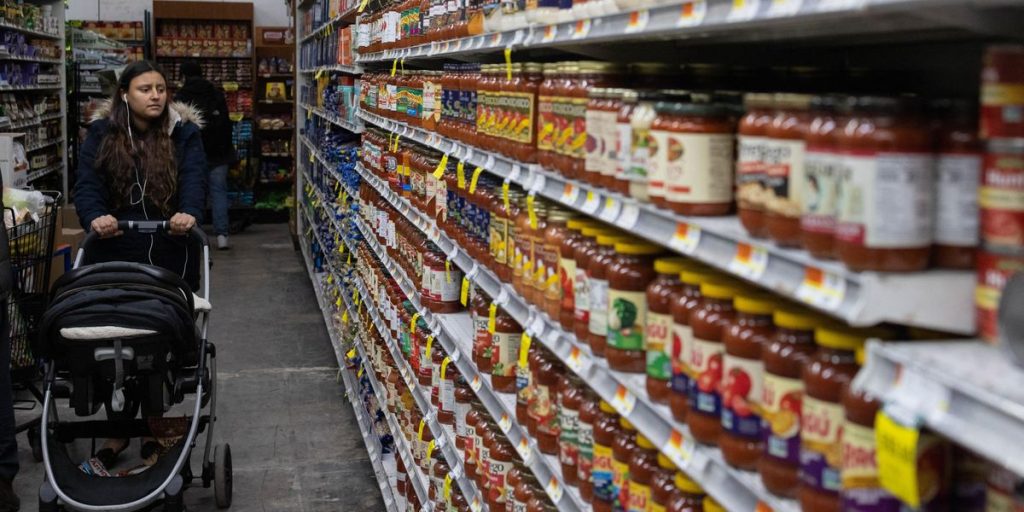
Hunger is expected to soar across the United States next month when more than 30 million people enrolled in the Supplemental Nutrition Assistance Program see their food benefits slashed significantly.
“This hunger cliff is coming to the vast majority of states, and people will on average lose about $82 of SNAP benefits a month,” Ellen Vollinger, director for SNAP at the Food Research & Action Center (FRAC), toldCBS News on Friday. “That is a stunning number.”
As the outlet reported: “That means a family of four could see their monthly benefit cut by about $328 a month. The worst-hit could be elderly Americans who receive the minimum monthly benefit, Vollinger said. They could see their SNAP payments tumble from $281 to as little as $23 per month.”
Since a federal public health emergency was first declared at the start of the Covid-19 pandemic, so-called emergency allotments have boosted food benefits nationwide.
Republican lawmakers in 18 states chose to eliminate their emergency allotments early. Many tried to justify the move by pointing to the recovery from the coronavirus-driven economic crisis, but research shows that demand at food banks has surged in states that spurned extra federal aid.
The remaining 32 states that have continued to provide enhanced food benefits will be forced to eliminate their emergency allotments in March because funding was cut in the 2023 omnibus spending package enacted in December.
States facing imminent reductions in food benefits include California and Texas, which have the most SNAP beneficiaries with 5.1 million and 3.6 million recipients, respectively. Meanwhile, New Mexico is home to the highest number of SNAP beneficiaries per capita, with more than 3 in 10 households currently receiving augmented food benefits.
As Insiderreported Friday, state officials are now “scrambling to get the word out to residents that their benefits are being dramatically reduced.”
Gina Plata-Nino, deputy director for SNAP at FRAC, told the outlet that “the last thing you want is grandma Sue showing up to the grocery store all of a sudden like, ‘Where’s my money? This is what I had budgeted.”
“That’s the hunger cliff that we’re facing—that people had this budget, things haven’t gotten better, and now you’re going to a grocery store where things are more expensive,” said Plata-Nino.
“You’re going to see, as the months go along, more families being hungry, more people visiting food banks, and just seeing the terrible effects that this had on all of these people.”
While the U.S. economy is on stronger footing than it was in March 2020, households are now grappling with higher prices—especially for essentials like milk and eggs—due to unchecked corporate profiteering.
According to data from the Bureau of Labor Statistics, groceries cost about 10% more at the end of last year than they did 12 months earlier. The price of a gallon of whole milk climbed from $3.74 in December 2021 to $4.21 in December 2022, for instance, while the price of a dozen large Grade A eggs increased from $1.79 to $4.25 over the same time period.
Given the context in which looming SNAP cuts are set to unfold, “you’re going to see, as the months go along, more families being hungry, more people visiting food banks, and just seeing the terrible effects that this had on all of these people,” Plata-Nino predicted.
Millions of households nationwide continue to struggle with food insecurity. According to data from the U.S. Department of Agriculture, more than 41.2 million people were enrolled in SNAP in fiscal year 2022, a 15% increase over fiscal year 2019, when roughly 35.7 million received food benefits.
“It may seem like an oddity that SNAP enrollment has increased given that the nation’s unemployment rate is at its lowest since 1969, but many workers still can’t find full-time work or line up enough hours to pay the bills,” CBS News noted, citing Vollinger. “Most working-age people who receive food stamps are employed, research has found.”
Vollinger told the outlet that people are often unaware that “so many SNAP households are employed, but often employed at low-wage levels—they aren’t in jobs that are family-sustaining so they still qualify for SNAP.”
As Insider reported: “Some states are stepping in to try and fill the gap left by the end of beefed-up SNAP benefits: New Jersey increased the minimum benefit that residents can receive, and Massachusetts is moving to try and keep payments higher for three months, albeit at 40% of what recipients get now.”
In other states that are simply sharing advice about how to cope with the pending cuts, such as stocking up on nonperishable items while food benefits remain higher, people are expressing anger.
“We are reducing your food stamps and we know you will have a hard time surviving so here are some tips,” one SNAP beneficiary in Colorado tweeted sardonically. “Don’t say we didn’t ever do nothing for you.”
In less than three weeks, bolstered SNAP benefits “will go the way of enhanced unemployment benefits, free school lunches, and the child tax credit,” Insider noted. “All provided a safety net and helped keep hunger at bay for many, but there is little legislative appetite to renew them.”
Other pandemic-era welfare state expansions—including increased Medicaid coverage and the free provision of Covid-19 vaccines, tests, and treatments—are set to end abruptly on May 11. That’s when the federal public health emergency, which the Biden administration has refused to extend further, is slated to expire.

